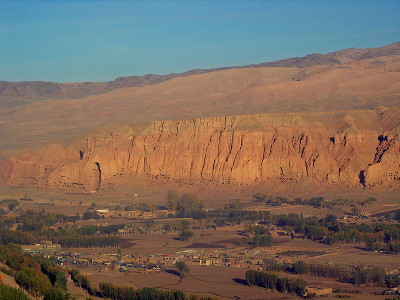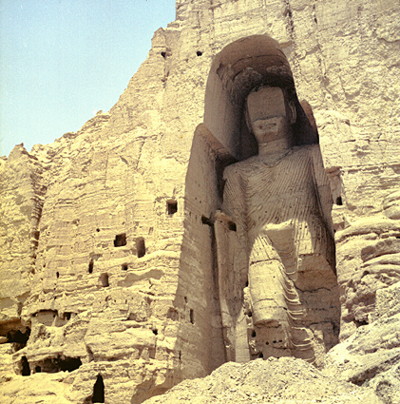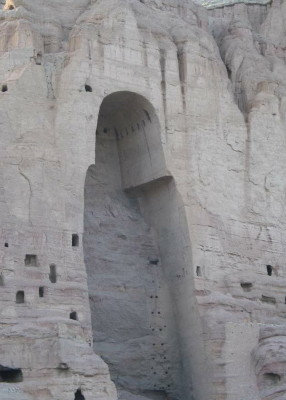The great Buddha was wearing a bright red robe, the way to the restoration of the Bamiyan ruins destroyed by the Taliban

ByCarl Montgomery
World heritage located in central Afghanistan "Cultural landscape of the Bamiyan Valley and ancient ruinsAlthough the two large Buddha statues of 'Big Buddha' were destroyed by the Taliban in 2001 and the decade is trying to be like, many people are still remembered to have been shocked by watching the state of the explosion in the movies with images Is it not?
Although the fragments of the large Buddha that were blown up are preserved by the hands of European and Japanese experts, unfortunately the prospects for realistic restoration are not yet established, but the exact construction age And that the vivid colors such as red and blue were once wearing, and at least the small Big Buddha could be repaired, as evidenced by the survey.
Details are as below.TUM - Bamiyan Buddhas once glowed in red, white and blue
A Buddha statue group that has been keeping watching the Bamiyan Valley located in the Silk Road since the 6th century. Among them, the greatest Big Buddha with a height of about 55 metersDainichi NiiIt is said that it is. The picture was taken in 1974 and the upper half of the face, said to have been wooden, was thought to have been lost a thousand years ago by the invasion of the Muslim power.

ByThalpan
Of the large Buddha group, 55 meters of the Dainichi Naru image that was central and 38 metersBuddhaThe statue was destroyed by the Taliban as "anti-Islamic idol" in 2001, and the picture shot of the blown up on March 12 was delivered to the world.

Munich Institute of TechnologyThe scientists brought back hundreds of pieces from Bamiyan and surveys over a year and a half have revealed various facts that were not known before the destruction.

◆Big Buddha color
It was revealed that the Great Buddha was originally vividly colored and had been repainted several times before Islamization. at firstExquisite(Mosquito) is dark blue, the outside is pink, the outside is painted orange, then the inside is light blue, the outside is red (Dainichi Nyorai) and white (Buddha). This seems to match the content of the 11th century literature which wrote about "red Buddha statue" and "white Buddha like the moon". Although there is a possibility that a white undercoating was given to the part of the skin other than the rough and the other, it is not able to obtain confirmation.

◆Construction method
The main body of the Great Buddha was carved out from a cliff, but the part of the rough quartz wrapped in a clay was molded with two or three layers of clay. The surface is smoothly arranged like baked pottery and shows amazing craftsmanship. Additives such as straw and rice husk for moisture absorption, clay hairs to stabilize plaster like glass fiber, quartz to prevent shrinkage are mixed in clay, the bottom layer is pile of wood He seems to have covered a thick layer of up to 8 cm thick on a Buddha statue with a fixed rope as a core material. With this, it wrapped Buddha statues without peeling off for 1500 years, and it was fixed more firmly as there was a part that endured the blast.

◆Age
Prior to the destruction, the age of the great Buddha was presumed only by cultural clues such as literature and the style of robes,Zurich Institute of TechnologyFrom the radioactive carbon of organic matter (such as the animal's hair) mixed in the robe clay by mass spectrometry conducted at Kiel University, the building age of the larger Great Buddha is 591 to 644, the smaller Big Buddha is It is specified as 544-595 years.

◆The way to preservation and restoration
International monument ruins conference(ICOMOS)So the fragments of the Great Buddha that were blown up are temporarily stored in the temporary warehouse of the Bamiyan Valley, but large fragments are just covering the site, the porous sandstone collapses in a few years There is concern. Also, in this case, synthetic resin that can be injected into the rock for the reinforcement and preservation of the ruins can not be used because the difference in properties with the rock is too large considering the size of Big Buddha and climatic conditions. So Professor Emmerling of the Technical University of Munich and colleagues in cooperation with graduate company Consolidas are improving the technology to inject organosilicon compounds developed by Consolidas into the rock.
Also at the Munich Institute of Technology, it is said that 3D models are now under construction to show the position of all fragments. Professor Emmerling said that it is about 2 m in depth and rather than an imageReliefAlthough it seems that restoration is basically possible if it speaks only to the smaller big Buddha (Buddha) close to Buddha, it is skeptical about the restoration of the big Buddha (Dainichi Nyorai) with the depth of 12 m. It seems to be. However, rehabilitation of the actual Buddha image not only has a technical problem but also a political barrier. It is necessary to build a factory in the Bamiyan Valley for the preservation and restoration of the debris, and if it is difficult to build a factory in the field, it is necessary to carry about 1,400 fragments, which is as heavy as 2 tons, to Germany It comes out.
It is said that the future of the Great Buddha will be considered at the conference to be held in Paris in early March.
Related Posts:
in Science, Posted by darkhorse_log







